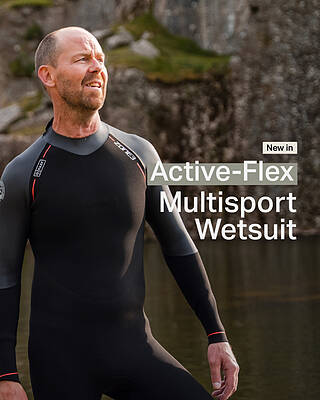The notion of Distance Per Stroke (DPS) is crucial for pool swimmers. Taking as few strokes as possible is ultimately more efficient and the smoothest way to travel through the water. But does DPS carry the same importance for triathletes?
Though open to debate, the overriding evidence suggests an absolute NO. DPS is far inferior to the holy grail of open water swimming that is cadence: the speed at which your arms tick over.
Pool swimmers travel through uninterrupted water; the pool usually has wave-break lane ropes and any splash from other swimmers is quickly diluted. They can afford to slow their stroke down to optimise the catch phase at the front end of the stroke.
Triathlon in the open water is a different kettle of fish. The churned up, wavy water means there isn’t necessarily any still water to catch onto at the front, so a high turnover becomes all the more important. Come race day, with mass starts, bodies and detached limbs flying here there and everywhere, the front end is the first part of the swim stroke that gets lost in the flurry. With people and feet occupying the space where a nice, long, and gliding swim stroke might occur, it becomes nearly impossible to get a strong, long catch.
Swimmers who have a long glide phase in their stroke tend to be slowed and knocked around by open water chop. An extended glide typically results in a slower turnover and, therefore, fewer strokes per minute. Momentum, instead, becomes key.
Time and time again I have seen very good pool swimmers who leave their triathlon training partners for dead in the pool, yet come out of the open water with their usually-dropped friends surrounding them.

Drills to improve Stroke Rate:
Ankle Bands
The use of ankle bands (which can be made out of an old inner tube) basically tie the feet together, taking out the kick and forcing you to balance your body in order to create a more productive pull for forward motion. Constant forward velocity helps to create balance, and forward velocity can be most easily attained with a high cadence.
Super Bursts
Forget technique as such; this one’s all about speed! The idea is to do a set of 6-8*50m, with the first 6 strokes of each length at maximal RPM. Forget about long strokes or full catch; it’s the neural firing we are after. Then ease off and swim the rest of the 50 metres easy, but still maintaining a fast turnover. Make sure this is done after a good warm up.
Wetronome Swimming
You can buy basic waterproof metronomes for swimming that you attach to your goggles, which provide a constant ‘beep beep beep’ing (slightly incessant but useful nonetheless). Match the beeps with your hand entries. You can discuss with your coach as to what speed is best for you. This method is also fantastic for balancing out a lopsided stroke.




























































